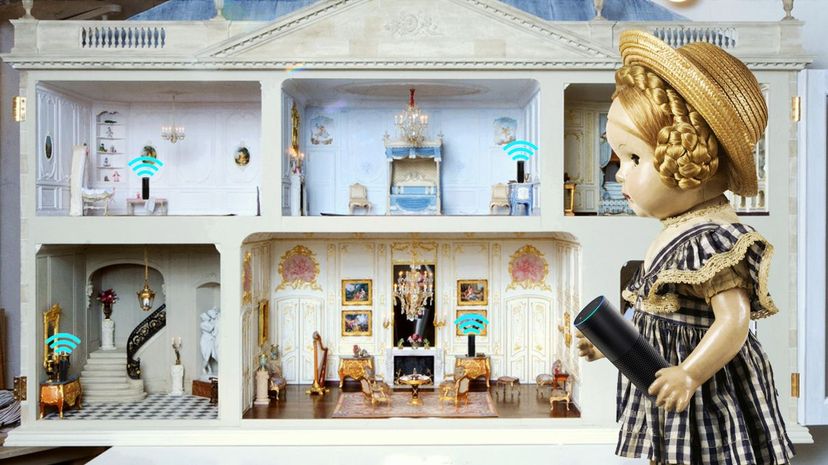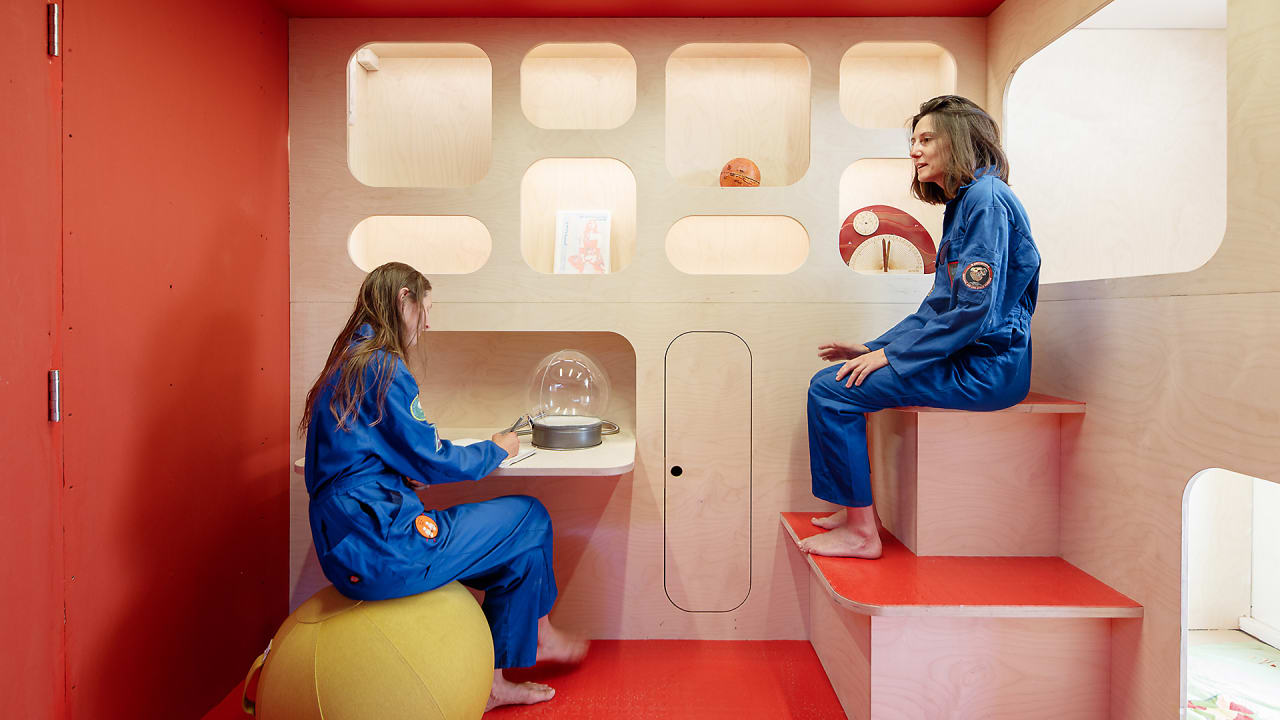
“How do you think we should live on Mars?” That’s the (very open-ended) question that was recently posed to more than 200 people in England. The answer has just landed in a public square in Bristol, UK—and it’s a two-story, solar-powered dwelling with a kitchenette, a hydroponic garden, and a “Martian toilet.”
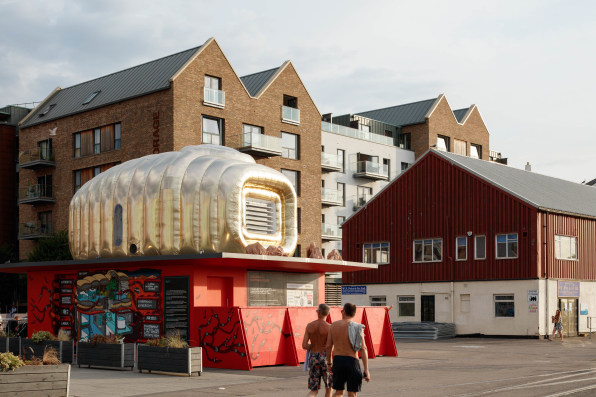 Dubbed the Martian House, the structure will open to the public next week and host a series of talks and workshops about sustainable living. Unlike the flurry of farfetched renderings of Mars colonies populating the internet, the Martian House is a tangible object that’s designed to get people to think less about actually colonizing space and more about living with scarce resources, and within your means in a constrained environment that isn’t driven by consumerism.
Dubbed the Martian House, the structure will open to the public next week and host a series of talks and workshops about sustainable living. Unlike the flurry of farfetched renderings of Mars colonies populating the internet, the Martian House is a tangible object that’s designed to get people to think less about actually colonizing space and more about living with scarce resources, and within your means in a constrained environment that isn’t driven by consumerism.
The Martian House was conceived of by artists Ella Good and Nicki Kent, who wanted to use Mars as a lens to focus on what we really need and how we want to live on Earth. It was designed by two British architecture and design firms: Pearce+ and Hugh Broughton Architects, which has designed a number of science research stations in Antarctica. The architects consulted with space scientists about the climate conditions on Mars and how those should translate into their design.
They also ran a series of workshops in Bristol, where members of the public could dream up their ideal home features in space, like an open kitchen, or a view of the Martian landscape. The most common request, however, was living plants. “They’re a living thing—they need to be tended and looked after, and you can eat them,” says Hugh Broughton Architects’ director, Hugh Broughton. “But it’s as much the caring as anything else, which is very therapeutic, especially in an alien environment.” (At the U.S. South Pole Station in Antarctica, Broughton says researchers can book a half-hour slot to just sit in the hydroponic garden, tend the plants, or even read a book in the warmth.)
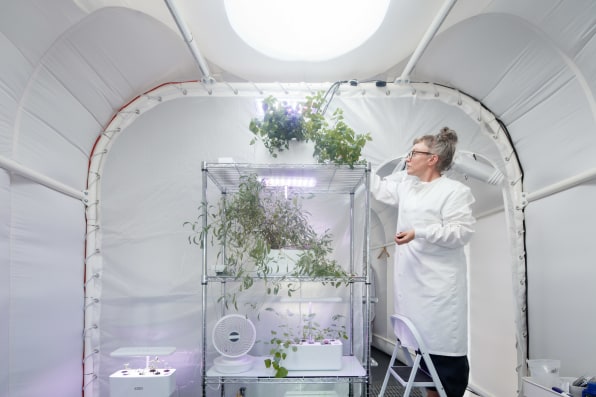 Naturally, plants hold a special place on the second floor of the Martian House. Together with a kitchenette, the “hydroponic living room” is contained within a pressurized, double-skin inflatable structure lined with gold foil. This comes with a window and a skylight, and the gold coating is meant to reflect the sun and reduce heat gain on the surface. (The temperature on Mars is cold, but Broughton says the equipment required for lighting and ventilation will build up enough heat inside.)
Naturally, plants hold a special place on the second floor of the Martian House. Together with a kitchenette, the “hydroponic living room” is contained within a pressurized, double-skin inflatable structure lined with gold foil. This comes with a window and a skylight, and the gold coating is meant to reflect the sun and reduce heat gain on the surface. (The temperature on Mars is cold, but Broughton says the equipment required for lighting and ventilation will build up enough heat inside.)
On Mars, the walls within would be filled with Martian regolith, a silt-like volcanic rock that’s readily available on the planet. The Bristol version, however is filled with air. Meanwhile, the ground floor houses compact bedroom pods and a Duravit toilet with a heated seat, illuminated bowl, and an odor extraction mechanism because you can’t just open the window on a planet with so little oxygen. On Mars, this half of the house would be built underground, within Mars’s empty lava tubes. In Bristol, it sits in a boarded-up shipping container.
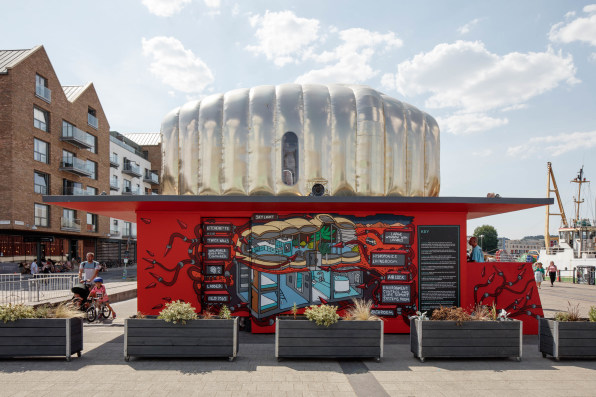 The Martian House was designed to withstand the red planet’s harsh climate (an average temperature of -80 degrees and high cosmic radiation), but this isn’t meant to be a NASA-proof house for Mars. “I’m sure there are technical holes, or someone would say ‘the rocket dimensions are this and your house wouldn’t pack in like that,’ but that’s not the aim,” says Broughton. “Its aim is to, as closely as possible, represent what a house on Mars would be like, but actually in the process to provoke questions about our own lives on Earth.”
The Martian House was designed to withstand the red planet’s harsh climate (an average temperature of -80 degrees and high cosmic radiation), but this isn’t meant to be a NASA-proof house for Mars. “I’m sure there are technical holes, or someone would say ‘the rocket dimensions are this and your house wouldn’t pack in like that,’ but that’s not the aim,” says Broughton. “Its aim is to, as closely as possible, represent what a house on Mars would be like, but actually in the process to provoke questions about our own lives on Earth.”





